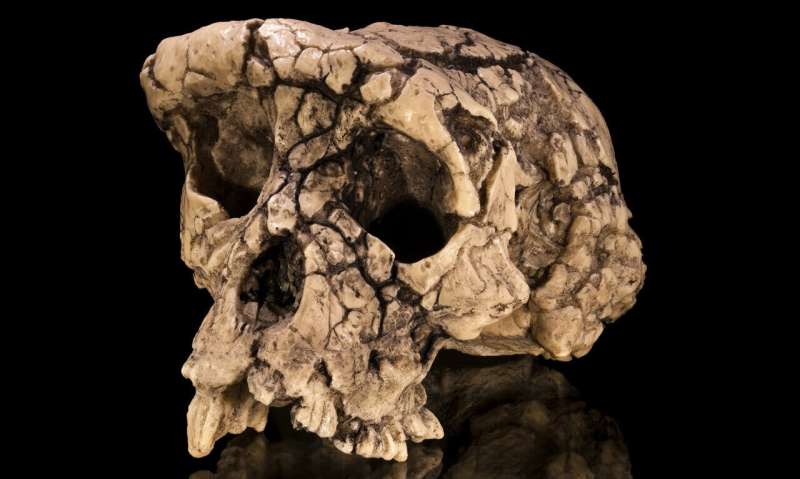November 24, 2020 report
Study of partial left femur suggests Sahelanthropus tchadensis was not a hominin after all

A small team of researchers from France, Italy and the U.S., has found evidence that suggests Sahelanthropus tchadensis was not a hominin, and thus was not the earliest known human ancestor. In their paper published in Journal of Human Evolution, the group describes their study of the fossilized leg bone and what it showed them.
Back in 2001, a CNAR team of four led by a Frenchman, Alain Beauvilain, and three Chadians, Adoum Mahamat, Djimdoumalbaye Ahounta, and Gongdibé Fanoné, discovered the fossilized remains of Sahelanthropus tchadensis at a site in the Djurab Desert in Chad. Subsequent study of the remains by Brunet and his team showed them to be between 6.8 and 7.2 million years old. They also found evidence indicating that the specimen walked upright and was therefore a hominin and a human ancestor. And because of the timeline, the find was described as the earliest known ancestor (prior to the find, "Lucy" was the earliest known ancestor—she had been dated back to approximately 3.2 million years ago.) The evidence the team reported depended mainly on the size of the teeth and marks on the back of the skull. After Brunet published a paper describing the team's findings, many in the field refused to recognize the work because it had been published in a journal that was not peer reviewed and he refused to allow access to the fossilized remains. In this new effort, the researchers claim to have found evidence suggesting that Sahelanthropus tchadensis did not walk upright and thus was not a hominin, but was instead an ape ancestor.
The work involved studying a partial left femur that other researchers had found near the site where Sahelanthropus tchadensis had been found—close enough to Sahelanthropus tchadensis, they suggest, to indicate that it was part of its remains. Furthermore, study of the femur suggested that it came from an apelike creature that walked on all fours, like gorillas and other great apes. They also noted that the size of the teeth as argued by Brunet and his team was not sufficient evidence to claim the remains were hominin —they could have come from a small female ape. The researchers conclude that their evidence shows that Sahelanthropus tchadensis was not a hominin and was therefore not an early human ancestor.
More information: Roberto Macchiarelli et al. Nature and relationships of Sahelanthropus tchadensis, Journal of Human Evolution (2020). DOI: 10.1016/j.jhevol.2020.102898
Journal information: Journal of Human Evolution
© 2020 Science X Network



















